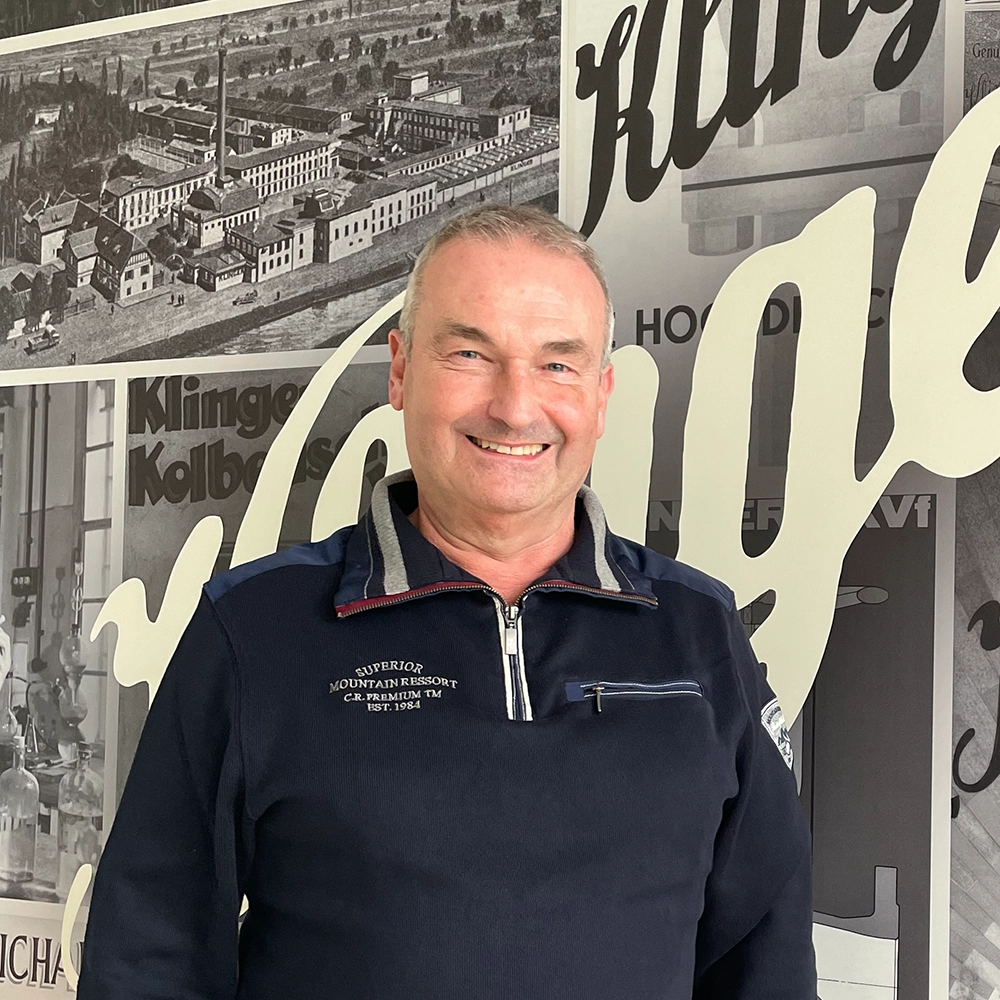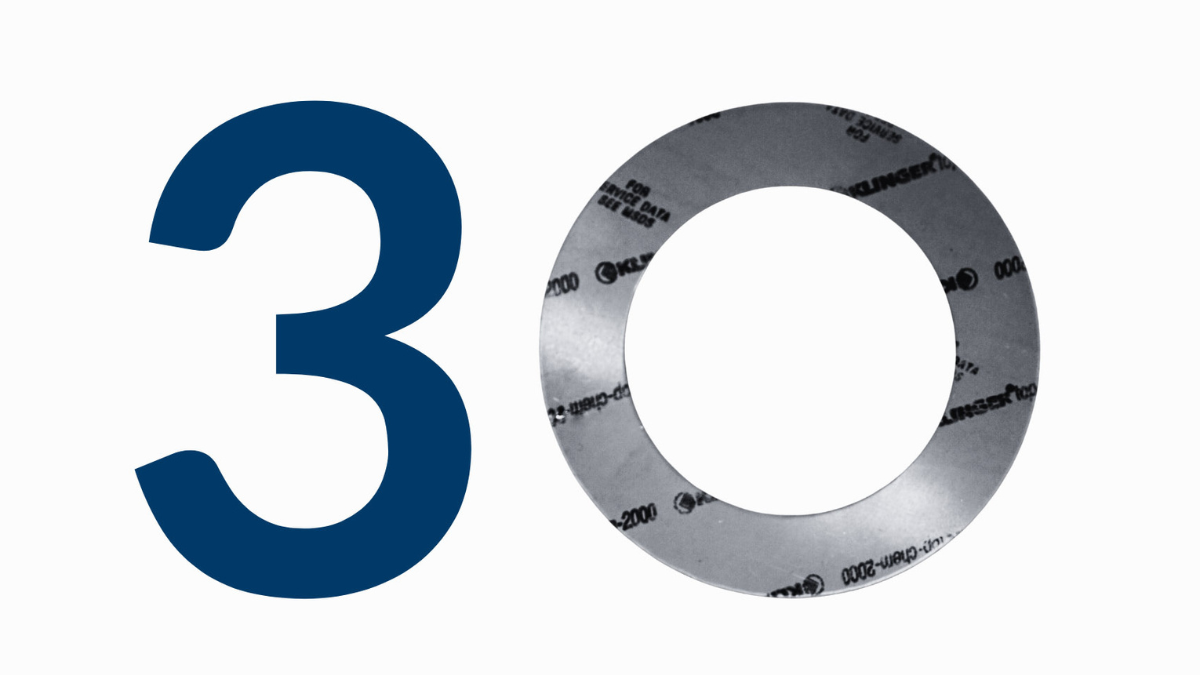KLINGER celebrates 30 years of TopChem 2000 – the undisputed champion in sealing solutions for highly challenging applications!

“A TopChem gasket installed 30 years ago would still be holding firm today. That’s not a promise; it’s a fact.”
The current production manager, Gerhard Pawlek, was present at the genesis of the TopChem 2000 gasket.
Gerhard Pawlek, production manager at KLINGER Dichtungstechnik, speaks with the confidence of an engineer with intimate knowledge of the product. And the facts prove him right: A success story marked by steady growth in production and sales, the KLINGER TopChem celebrates its 30th anniversary this year. Though the story begins not in Austria but in Switzerland.
Contacts mentioned in the article:
- Gerhard Pawlek, Production Manager at KLINGER Dichtungstechnik:
+43 2252 62599 137 - Stephan Piringer, Managing Director of KLINGER Dichtungstechnik:
+43 2252 62599 137 - marketing@klinger.co.at
From Switzerland to Gumpoldskirchen
In 1992, Istag began developing a gasket there that would set new standards: Following the industry-wide ban on asbestos, a fervent search for a replacement for this material ensued. Experiments with the durable synthetic PTFE showed promising results. The developers at the Swiss KLINGER company were well aware of the need for a material that would not melt under high pressure and temperature, which PTFE was prone to do. “TopChem 2000 achieved the lowest creepage values in the test set-ups – a unique selling point for the gasket even today, 30 years on,” says Gerhard.

The challenges of mass production
The first prototypes of the sealing sheets in the handy DIN A4 format were presented throughout the Group in 1994. Having conceived a product with outstanding sealing properties and excellent heat and chemicals resistance, the next challenge was to make this ingenious concept suitable for mass production.

“That’s where Gumpoldskirchen came into play. This is where we started to produce the gasket on a larger scale, in sheets measuring 1200 by 1200 millimeters.”
Development at KLINGER Dichtungstechnik, headed by Stephan Piringer, had its work cut out to get TopChem ready for series production.
The expertise required for series production was quickly developed, with KLINGER Dichtungstechnik gradually working towards ever larger production formats.
How KLINGER Dichtungstechnik mastered series production?
“A number of questions presented themselves: How do you mix the raw materials? What calenders can we use to make the sheets? And how can we do the thermal treatment of these large panels?” says Stephan, highlighting the uncharted territory the production team were venturing into. The main objective was to produce sealing sheets of 1.5 by 1.5 meters. “This is the standard industry format and the easiest for companies to use for die-cutting and further processing. This format also facilitates planning, as you know exactly the size and number of gaskets you can get out of each sheet,” says Stephan.
From the first prototype to an indispensable industrial resource
Success finally came in 1995, when large-scale production gathered speed, setting off a growth curve that has only pointed upwards ever since: Starting with an annual production capacity of four to six tons in the early years, KLINGER Dichtungstechnik produced 17 tons of TopChem gaskets in 1996 and 30 tons in 1998. Today, the product’s four variants (2000, 2003, 2005, 2006), have become indispensable in countless industrial sectors.
Fact Box
TopChem variants
- TopChem 2000: This universal high-performance product is the only PTFE-based gasket with a fire safety certificate.
- TopChem 2003: Made of PTFE filled with hollow glass microspheres, this material is highly adaptable and ensures tightness at low gasket compression.
- TopChem 2005: Thanks to its inorganic fillers, this PTFE gasket material withstands even exposure to strong acids.
- TopChem 2006: Barium sulphate mixed in with the PTFE makes this gasket material exceptionally resistant to strong alkalis.
Did you know that …
- KLINGER TopChem gaskets are used in all industries wherever resistance to high temperatures and aggressive chemicals is key?
These include the oil and gas, energy, infrastructure, chemical, paper and pulp, transportation, food and pharmaceutical sectors. - KLINGER Dichtungstechnik is considering further developing the successful TopChem concept with silicon-based PTFE?
This would be used not for sealing sheets, but for three-dimensional molded parts for ball valves for use with highly aggressive and hot media. - the durability of the TopChem PTFE gaskets is a unique selling point?
Compared to gaskets made of other organic materials, they retain their sealing properties for a long time even at high temperatures and are therefore the preferred choice for long-term use for applications such as district heating systems.
Frequently asked questions (FAQ)
- What are the maximum temperatures KLINGER TopChem gaskets can withstand?
KLINGER TopChem gaskets retain their excellent properties over long periods at temperatures of up to 260 degrees Celsius. Their impressive heat resistance has been demonstrated in several long-term tests. - What are the salient properties of the TopChem 2000soft gasket?
- TopChem 2000soft boasts superior mechanical properties and excellent flexibility. Made of porous PTFE filled with silicon carbide, it is a unique high-performance gasket.
